Table of contents
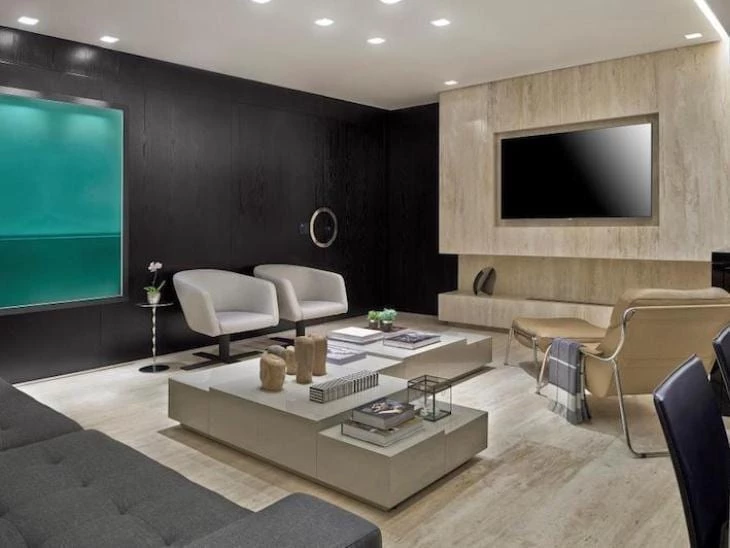
Travertine marble is a beige-colored natural rock composed of the minerals calcite, aragonite, and limonite. It is the result of physical-chemical reactions suffered by other rocks and also by the action of thermal waters, and is one of the most used stones in construction and revetment in Brazil.
See_also: Does a steam iron really work? Learn more about it here"Marble is a natural stone widely used in residential projects for wall cladding, flooring, sinks, countertops and other decorative objects. There are several types of marble, but the most used is Travertine, a beige colored natural limestone rock that is recognized by the small holes present in the stone that resemble small branches and leaves", says the architect and decorator ÉricaSalguero.
The architect Vivian Coser also reminds us that travertine marble has been used a lot since the Roman Empire: "Travertine coats important monuments in history, such as St. Peter's Basilica, the Coliseum, and the pyramids in Egypt, for example", she says.
The price of this stone varies, but in Brazil you can find it for approximately R$150.00 a square meter.
Main types of travertine marble
Travertine marble has variations due to the region where it was formed and the differences in its formation. There are several types of travertine marble and the Italian ones are generally the best known, such as: Romano or Classic, Navona, Turco, Toscano, Itamarati, Tivoli, Gold, Silver, and Negro. Below, you will find details about the three most popular types in Brazil.
Classic Roman travertine marble
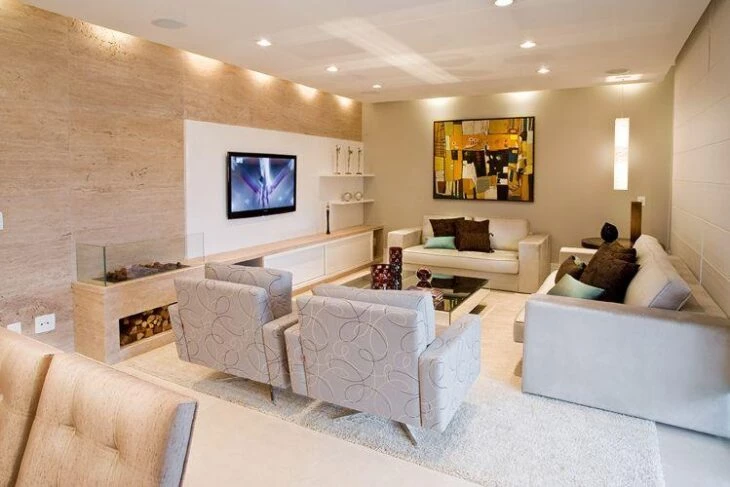
The most sought after option, due to its tradition and presence in history, is the Classic Roman travertine marble. This model is extremely resistant and has high durability, it was the coating choice for the Colosseum and St. Peter's Basilica. This rock presents an impressive beauty combined with light colors.from a straw tone to a more yellowish beige", points out Vivian Coser. Erica Salguero also highlights another characteristic that differentiates this model from the others: "it has the most marked and natural horizontal veins".
Navona travertine marble

The travertine marble Navona is lighter in color, with orange and cream tones. According to the professionals, the veins of this model are lighter and less marked. Furthermore, this stone is imported directly from Italy.
National travertine marble
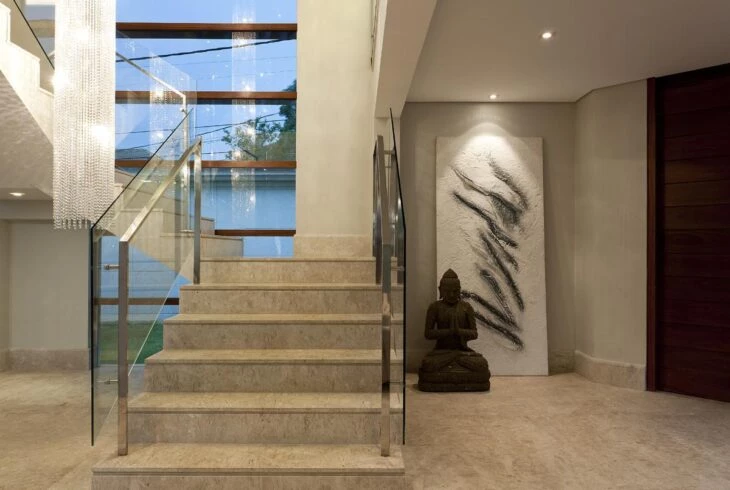
"The Beige Bahia, also known as National travertine, has darker, rounder, and more stained veins," says architect Vivian Coser. This model, as the name implies, comes straight from the Brazilian quarries and, according to Érica Salguero, has rustic format drawings that vary between brown and beige, which are more subtle and usually made over a lighter surface.
Learn about the travertine marble finishes
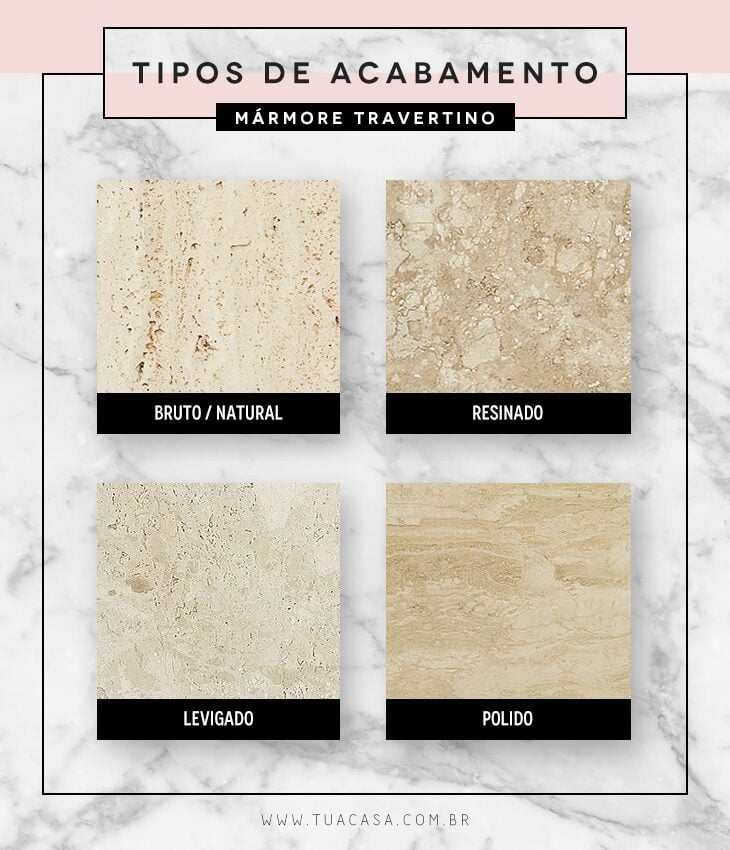
Before defining where you will place the rock and which model will be chosen, you need to consider the characteristics of the finish. There are four main types of finish, check out the advantages and disadvantages of each:
- Raw or natural
"The Rough type, as the name implies, is stone straight from nature, with opaque finish and apparent veins", points Salguero. Coser adds that "the stone is just cut in the right dimensions for application, it doesn't have any other treatment". The professionals recommend this finish for wall applications, mainly, but they don't recommend the piece for bathrooms, kitchens, and floors.
- Resigned or plastered
The resin is the same color as the marble and covers the pores and holes in the surface: "After the resin is applied, the surface becomes smooth", says Coser.
- Levigated
The levigated finish has an opaque aspect and is sanded until the marble surface is smooth, making cleaning and maintenance easier, while maintaining the natural color. "This finish is smooth and opaque and can be used in all types of indoor or outdoor environments," points Érica Salguero.
- Polished
The polished finish has a smooth, shiny appearance. According to Vivian Coser, "it can be used on floors and walls, but it is not recommended for external floors due to the low adherence.
How to use travertine marble in decoration
Travertine marble is present in the decoration, construction, and cladding of various rooms. The main rooms that use this stone are the bathroom, the kitchen, and the living room, but the stone is also present in floors, stairs, and walls:
Travertine marble used in the bathroom
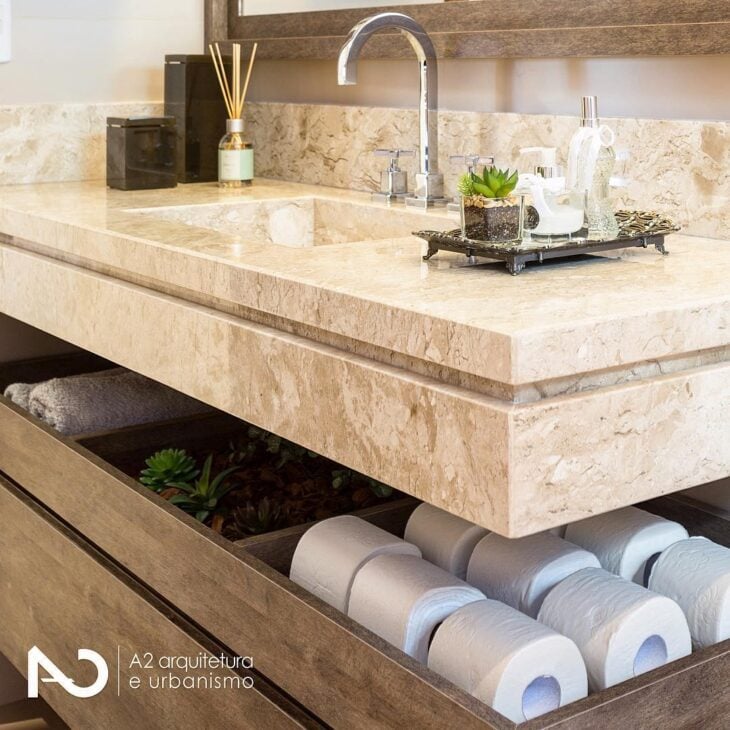
It is possible to create an elegant, modern and unadorned decoration in the bathroom by using travertine marble on the walls, countertops or even in the tub: "In bathrooms, it is not recommended to use raw travertine, since infiltrations may occur", says Vivian Coser.He also reminds us of another important point: "in case you decide to use travertine on the floor, do not choose the polished finish, which is more slippery, a characteristic that should be avoided in bathrooms.
1. highlight the natural shine of the stone

2. polished beige is perfect used together with wood pieces
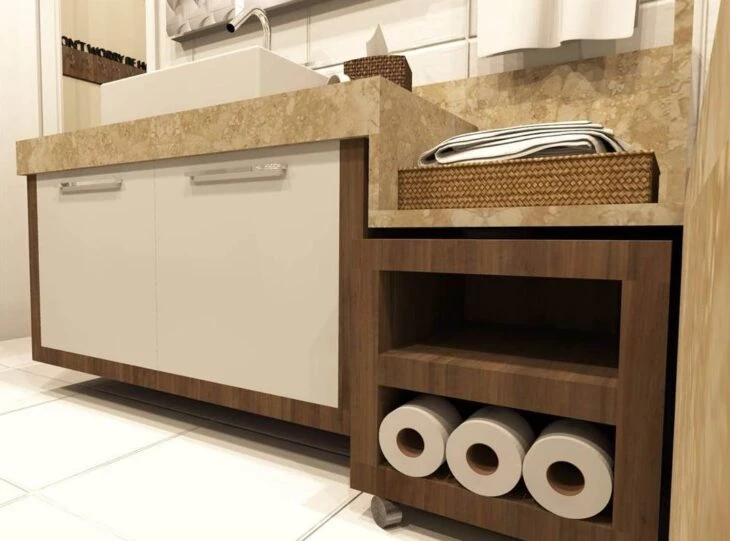
3. highlight for the skirting board that goes up the wall
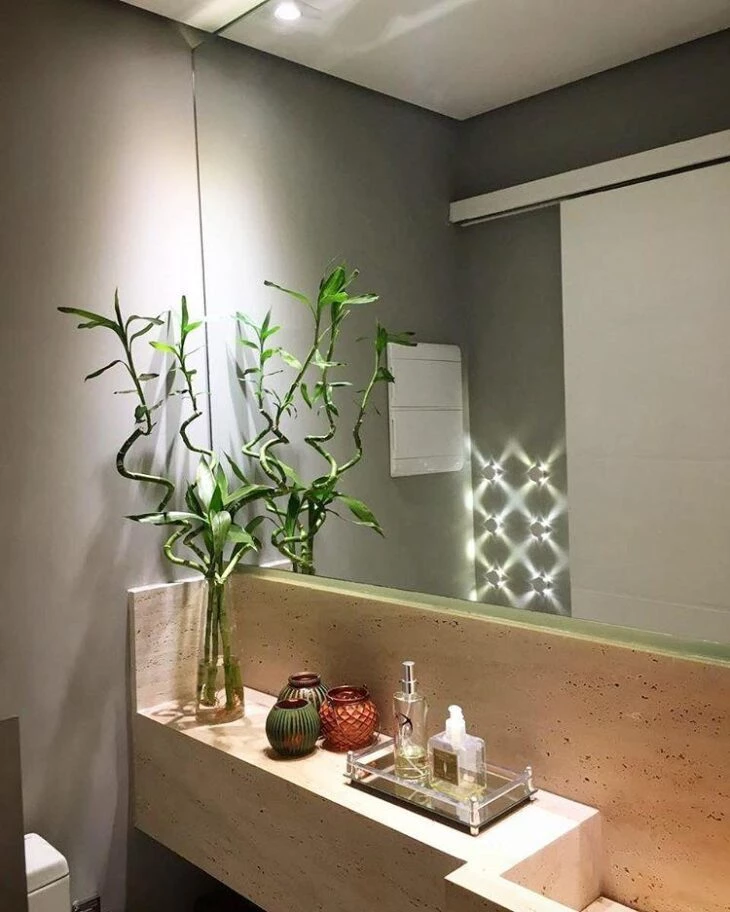
4. niches with marble frames
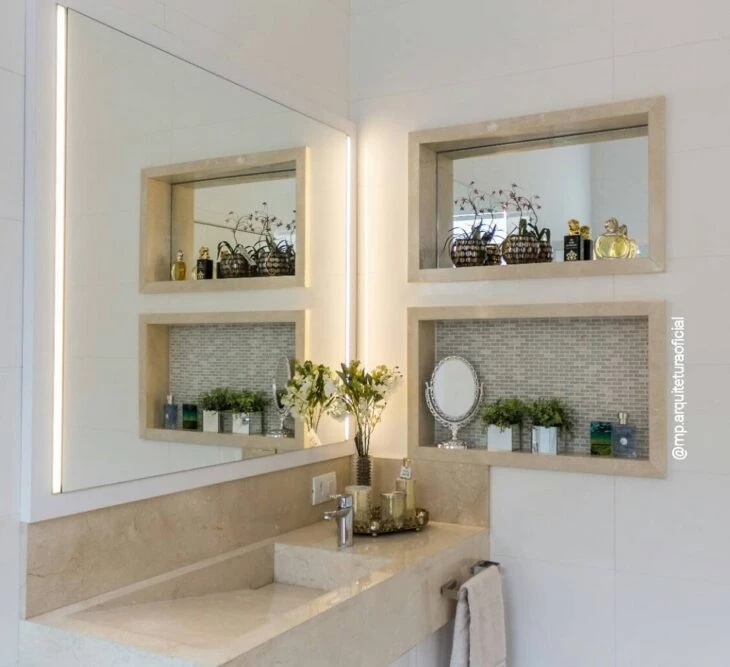
5. the use of marble can create a rustic-chic environment
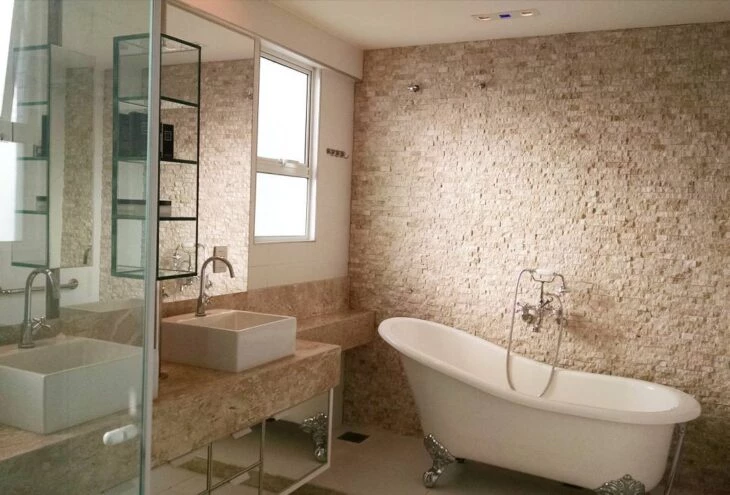
6. goes super well in the bathroom!
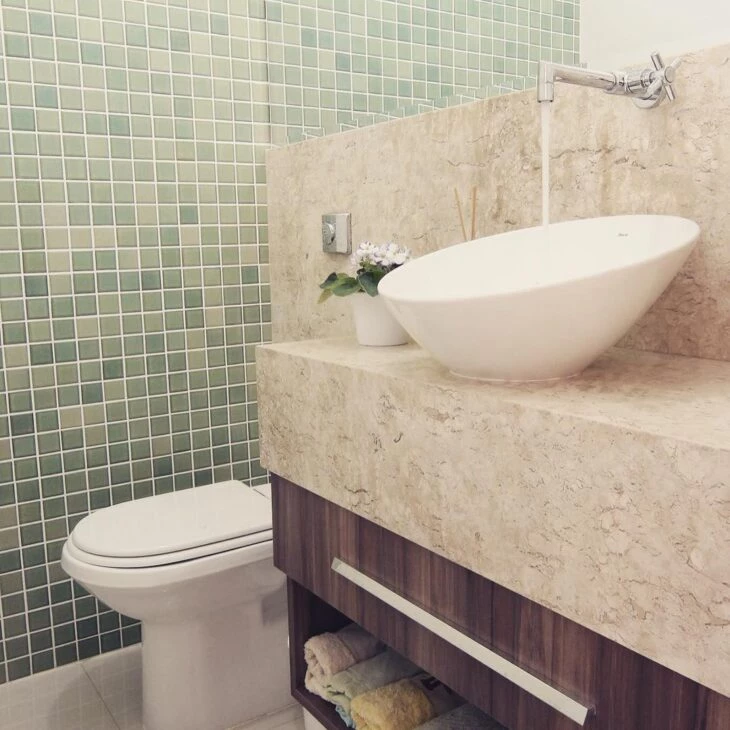
7. invest in a one-piece, sculpted tub
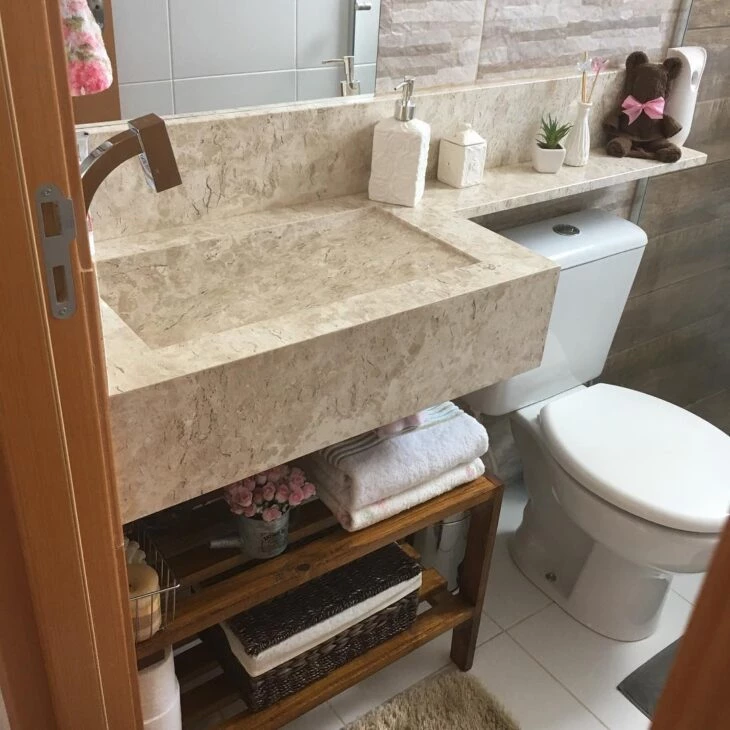
8. the countertop can also serve as a cabinet

9. the use of polished stone is a guarantee of refinement
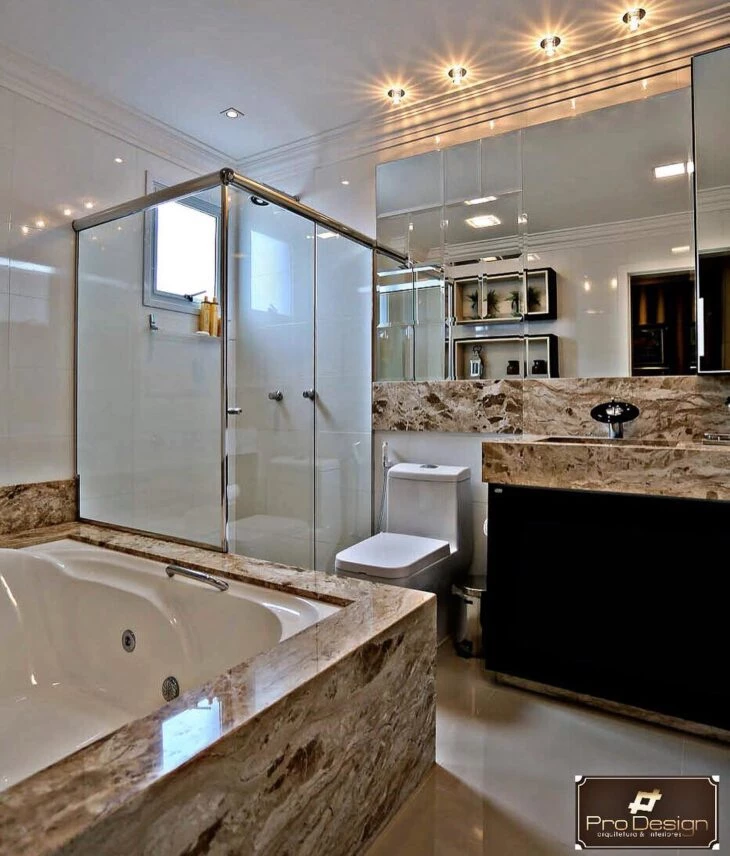
10. sink carved in the same stone as the countertop
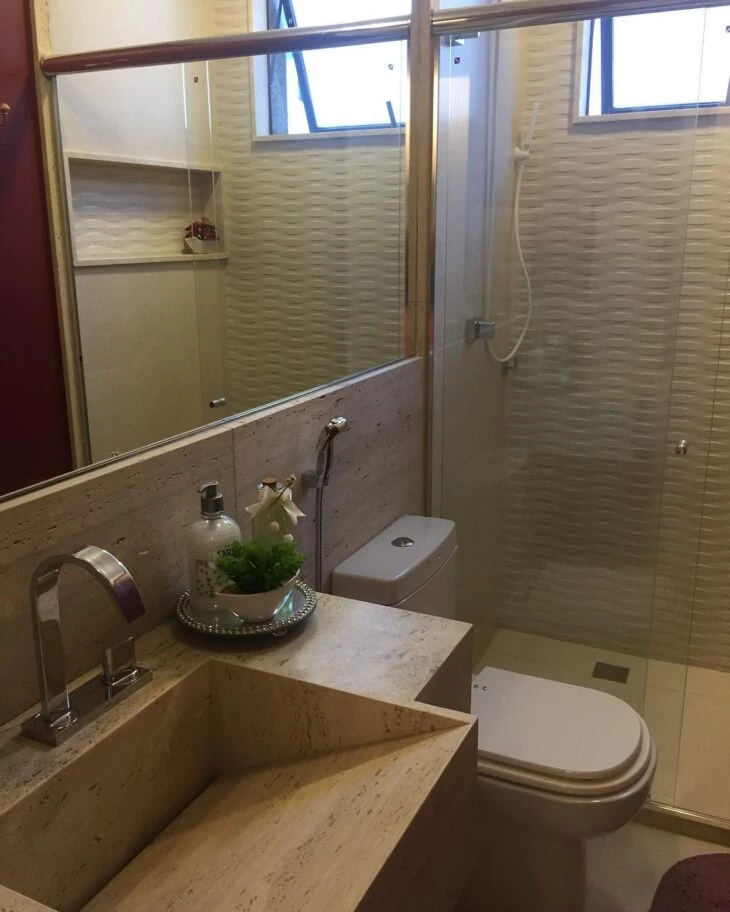
Kitchens with travertine marble
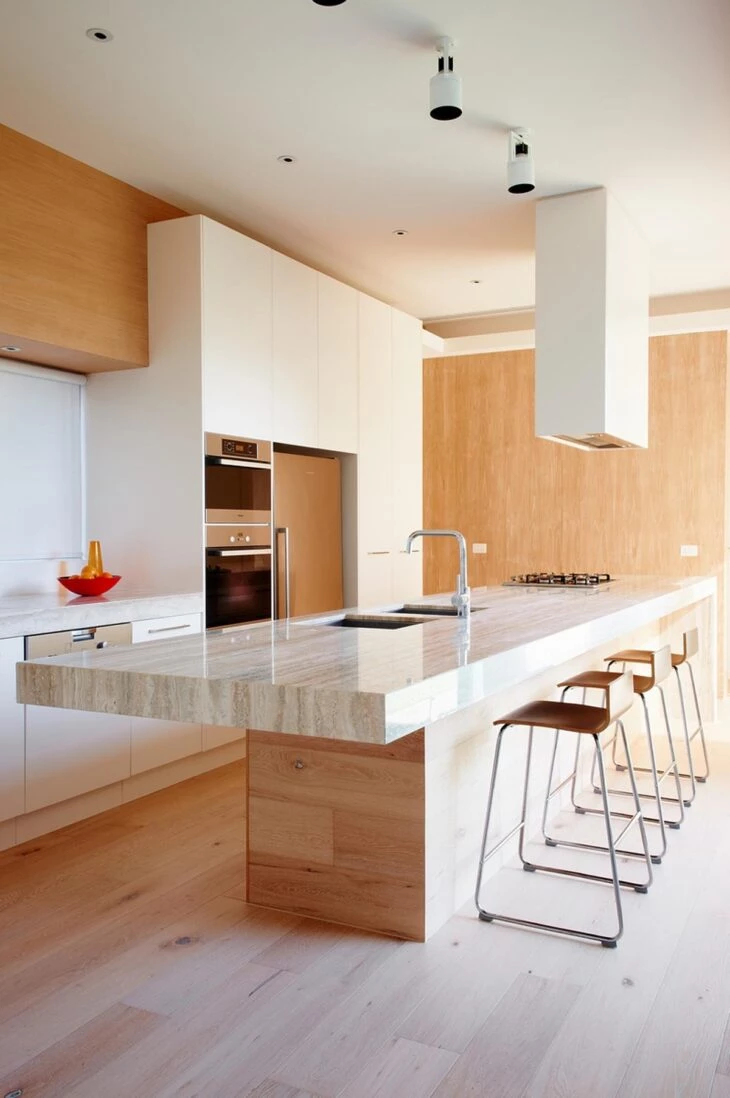
"The use of travertine in the kitchen is very restricted", warns Coser: "It is a porous material and can stain when in contact with oil and fat". Even though the stone is a very resistant material, care must be taken: if you choose to use travertine marble in the kitchen, you must waterproof the piece. Architect Érica Salguero believes that countertops, made for eating or forstore some condiments, are a good option of furniture to receive the travertine marble covering.
11. natural colors that go with all the covering and decoration of the kitchen
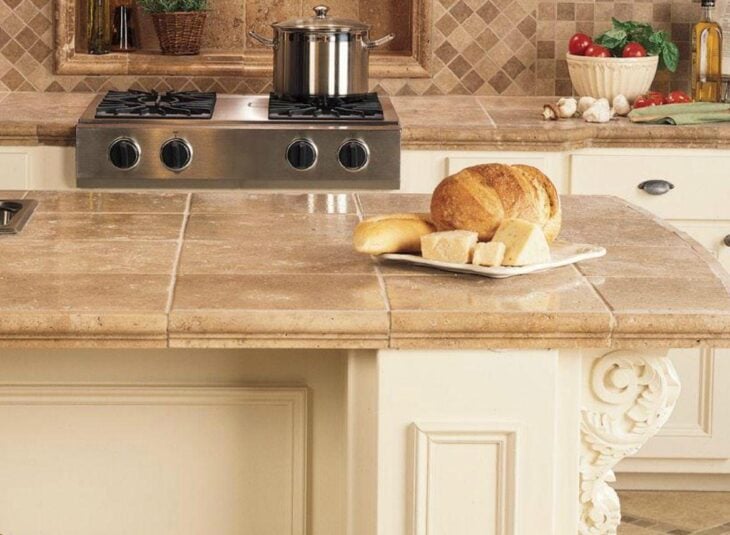
12. the island is the highlight of the kitchen
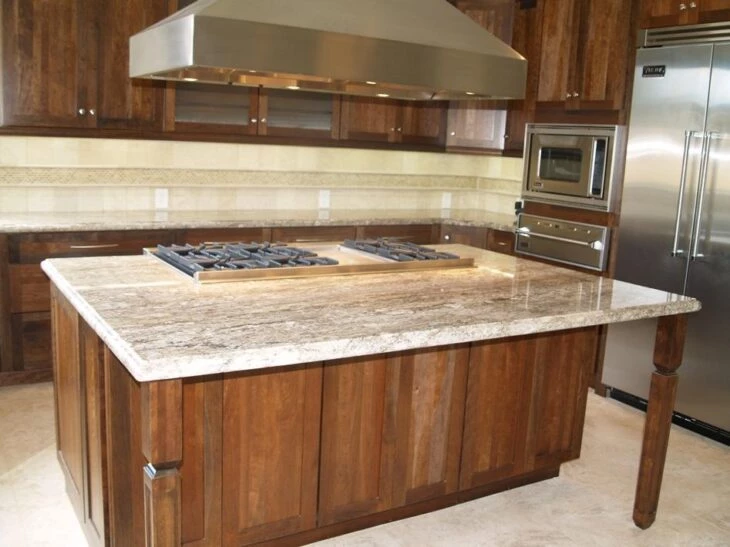
13. sculpted sink
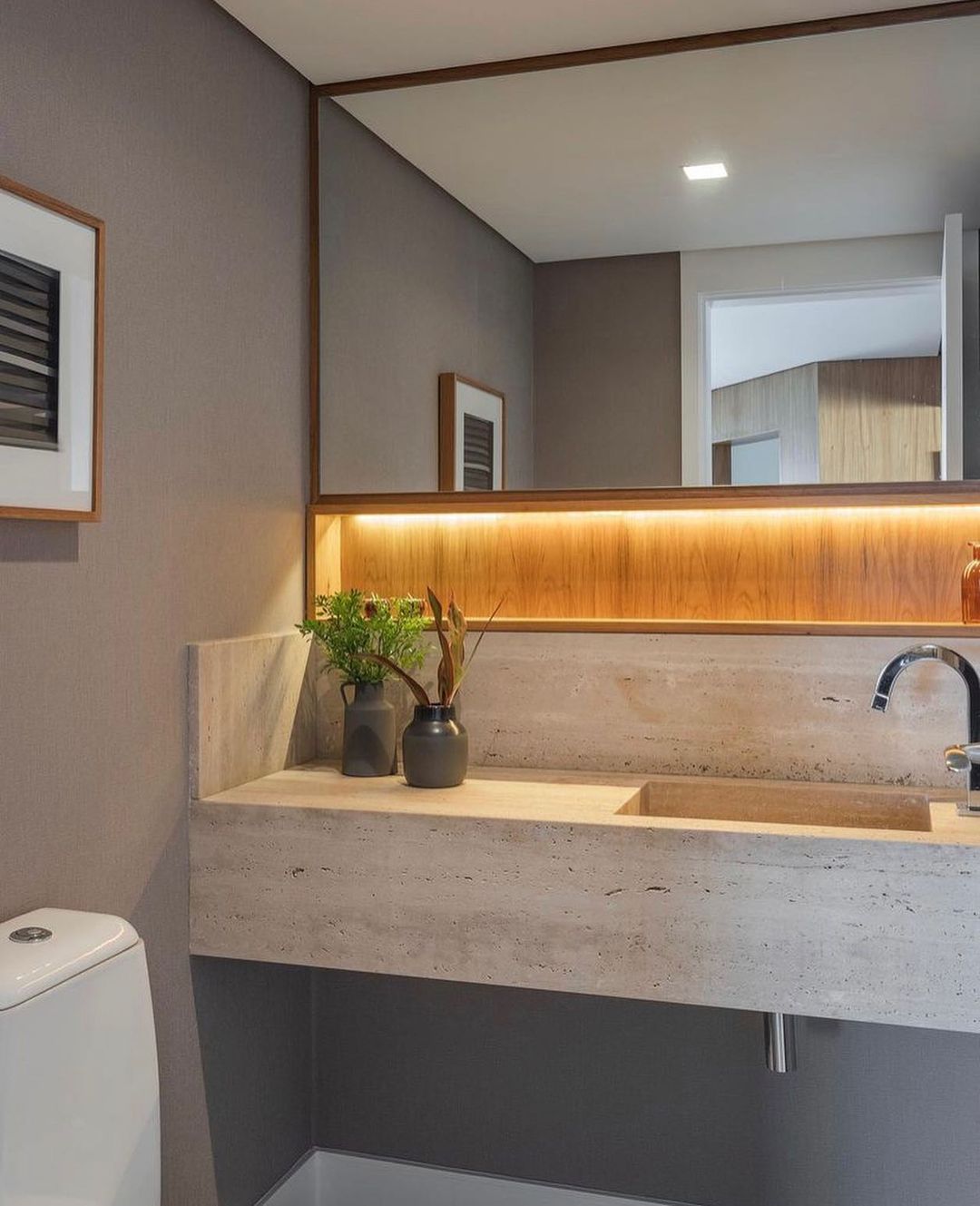
14. in the dining room, as a covering
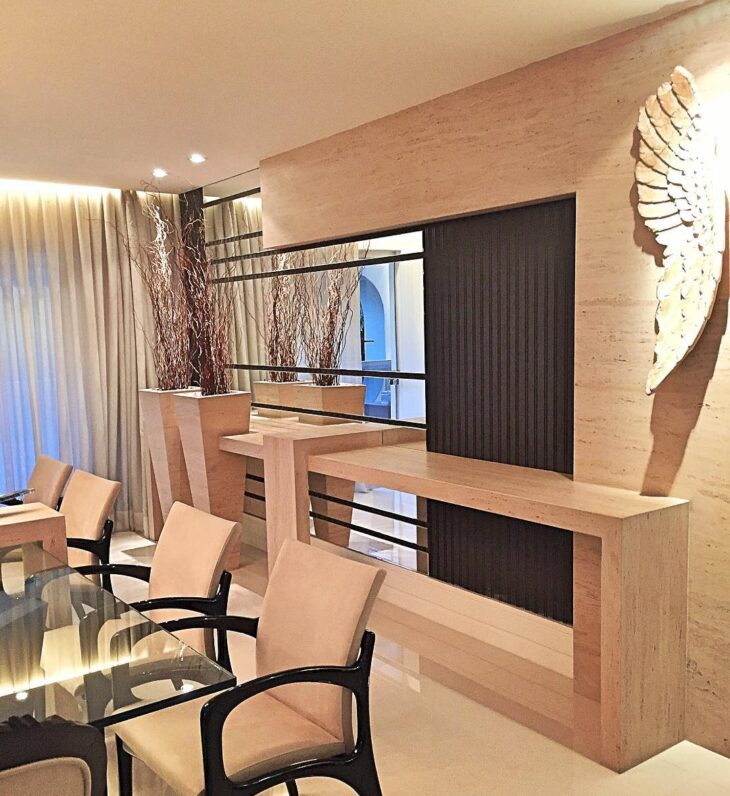
15. dining area full of personality
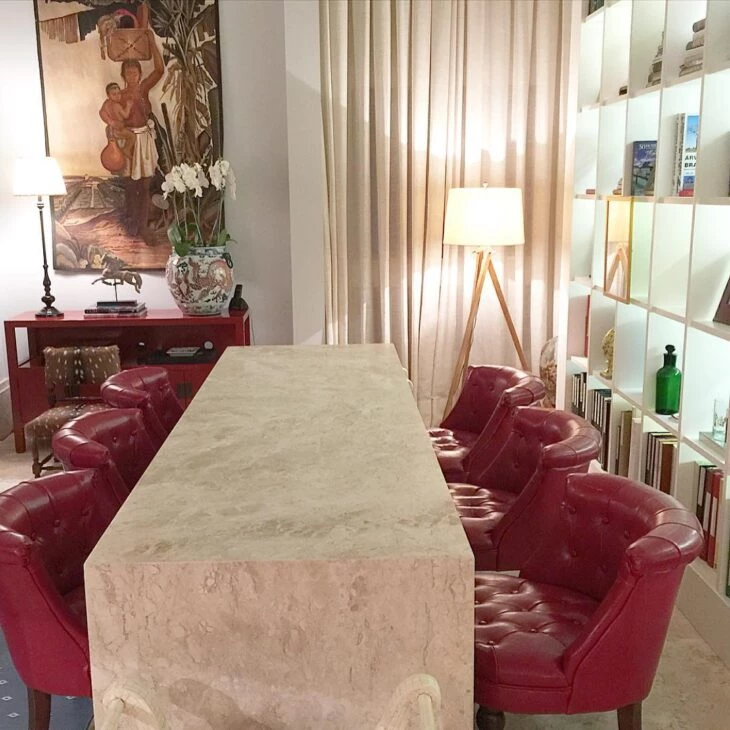
Travertine marble in the living room
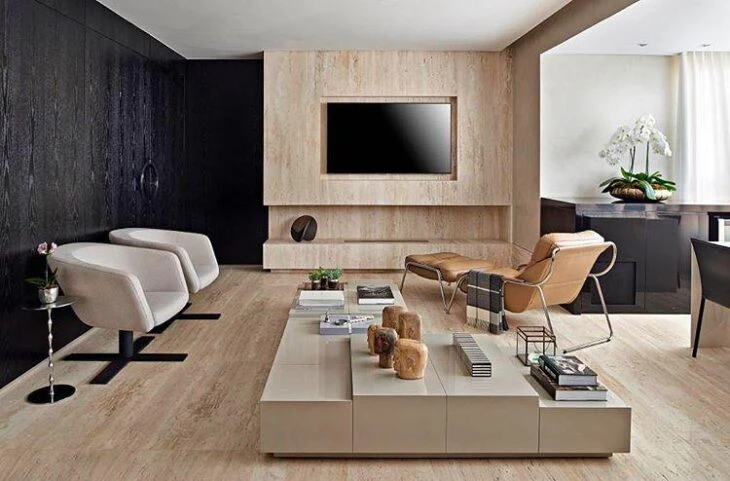
"In the living room, the use of travertine is very well received, creating a sophisticated and modern environment. It can be used on the floor, on the baseboard, on TV panels, on sideboards or lining the walls," says architect Vivian Coser. She also advises about the use of travertine on the floors: "it is not recommended to use travertine in its raw form, as it accumulates dirt in the holes and vessels of the stone, making it difficult tomaintenance."
16. the light tone helps create a clean atmosphere

17. the natural color of the rock matches with earthy tones
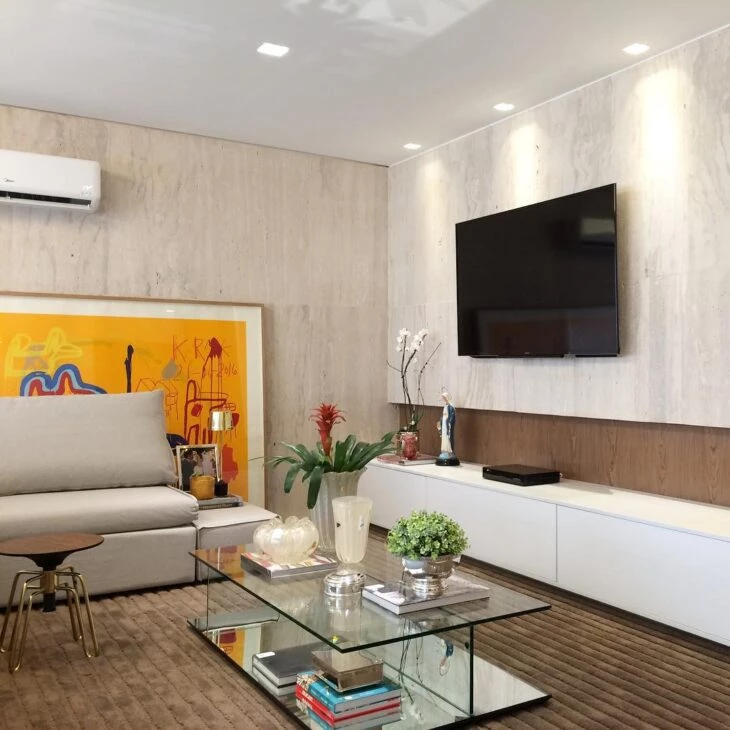
18. furniture in this material helps create the glam feeling
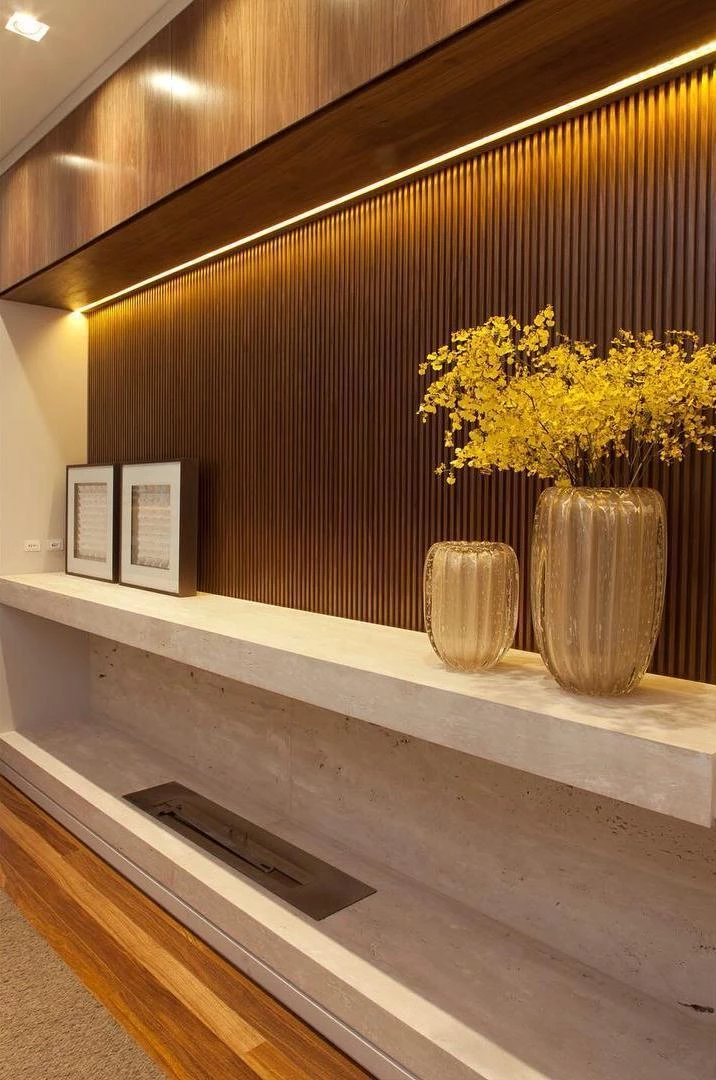
19. on the floor, for no one to fault
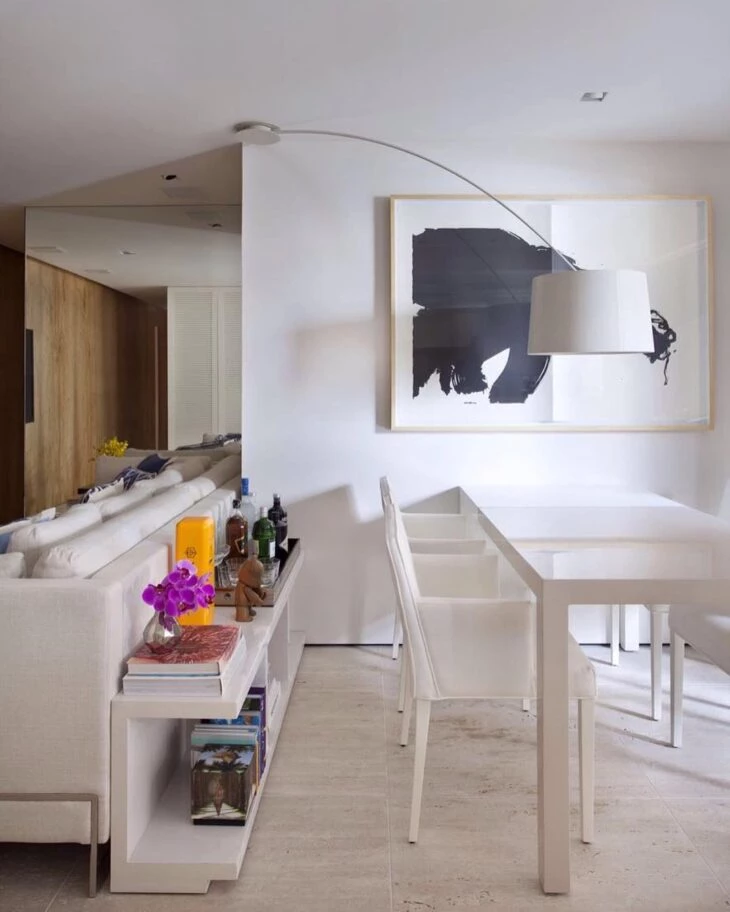
20. and even covering the fireplace

On the floor, on the stairs or on the walls
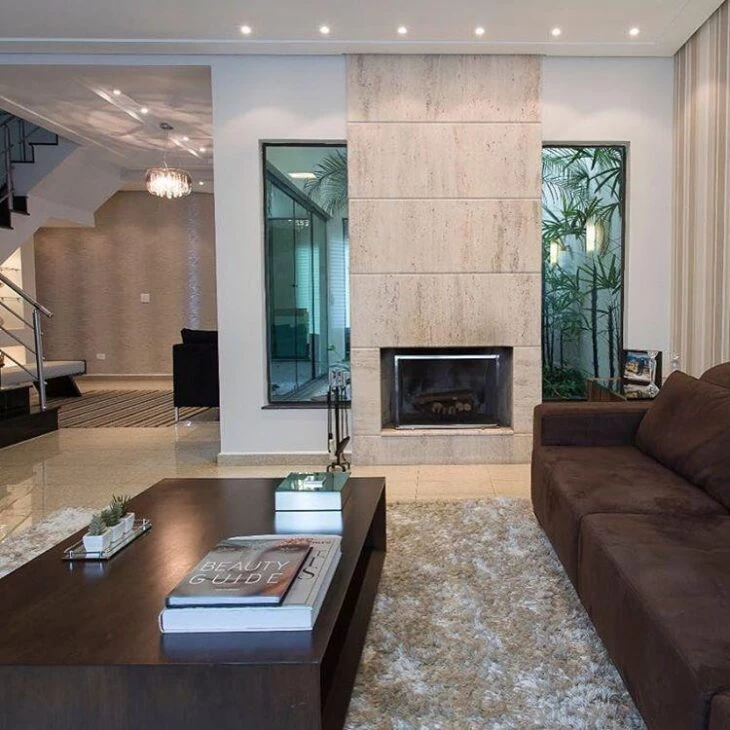
On the floors, travertine marble brings an elegant and sophisticated aspect to the environment. Choose a floor that matches the rest of the decoration and does not bring a negative visual weight to the room. Érica Salguero defends the use of polished form on the floors, while Vivian Coser reminds us that we should avoid using rough finishing, due to the difficulty of cleaning and maintenance.
See_also: Tissue Paper Flower: Tutorials and 55 Delicate Decorating IdeasThe travertine marble is responsible for creating a noble and very fine staircase. According to Coser, "the ideal is not to use polished travertine, because it has less adherence.
Finally, on the walls, the coating flexibility is greater. It is possible to use several models, in countless shapes and finishes. Érica Salguero indicates the use of rough and polished finishes and also the use of travertine marble tiles.
21. natural stains

22. imposing staircase
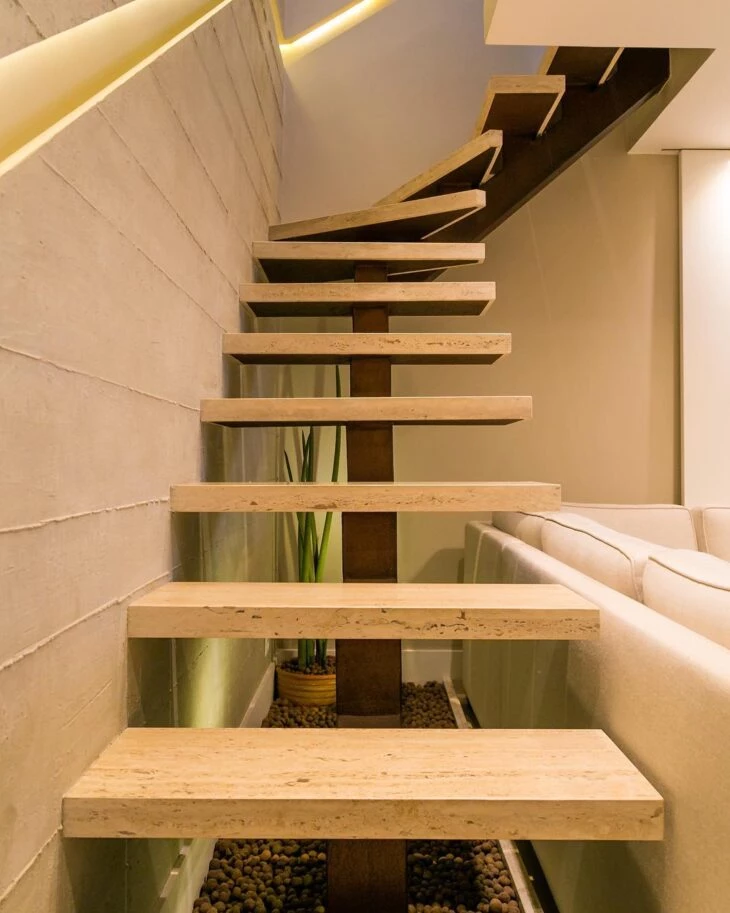
23 In the facade, as a frame for the entrance door
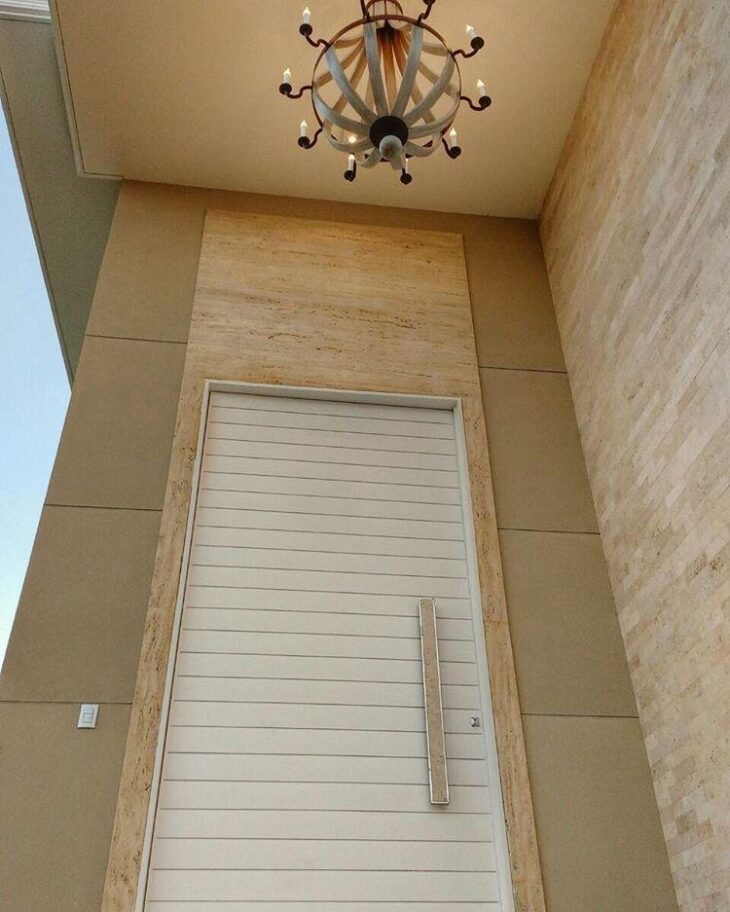
24. the leisure area can also receive the rock

25. perfect for working with a light color palette
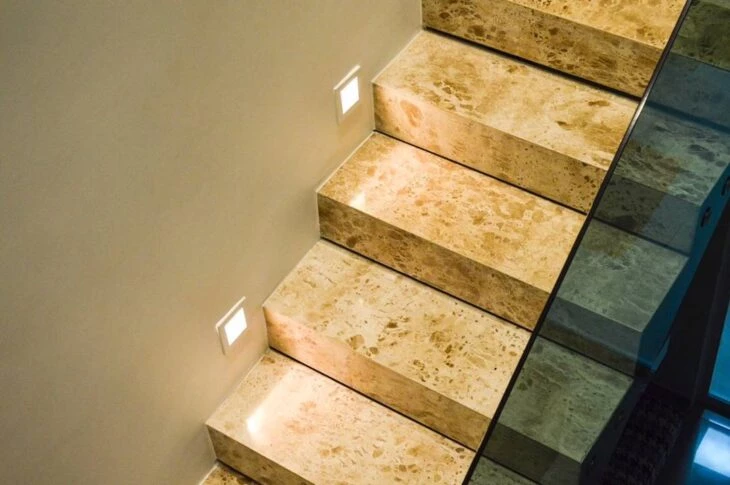
26. dining room with luxurious covering

27. in the entrance hall, because the first impression counts
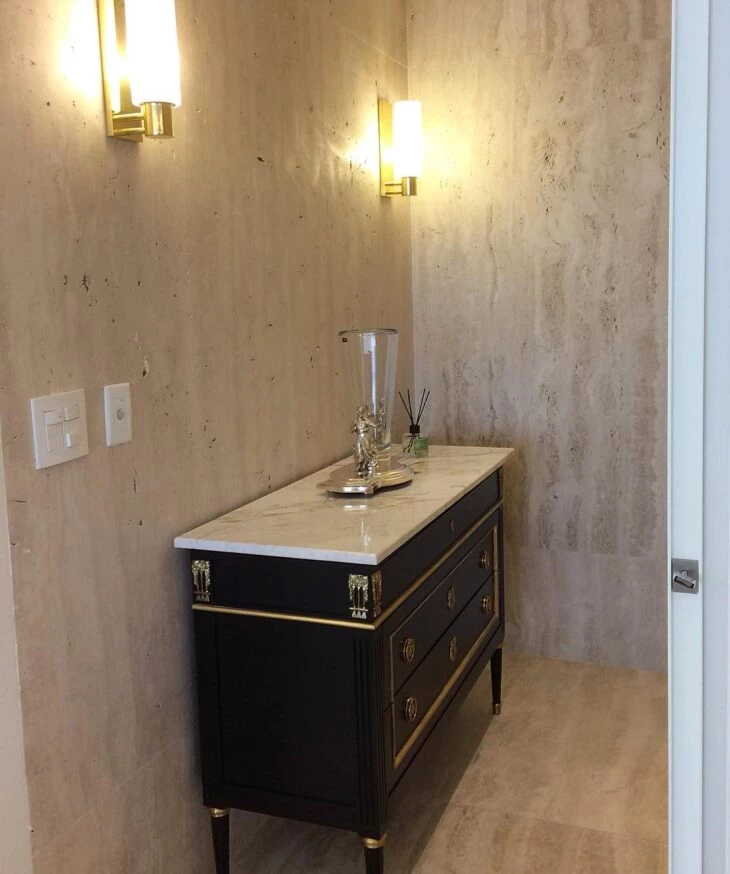
28. hugging the pool area
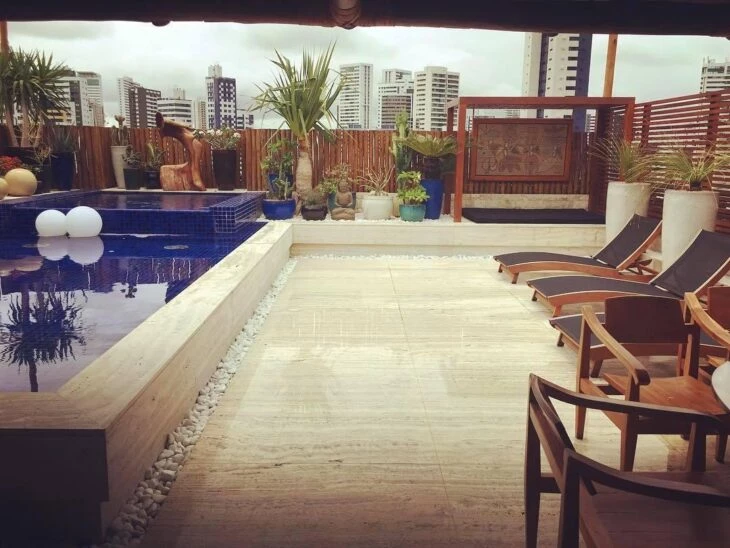
29. makes any environment more sophisticated

30. a two-tone ladder

How to conserve and maintain travertine marble
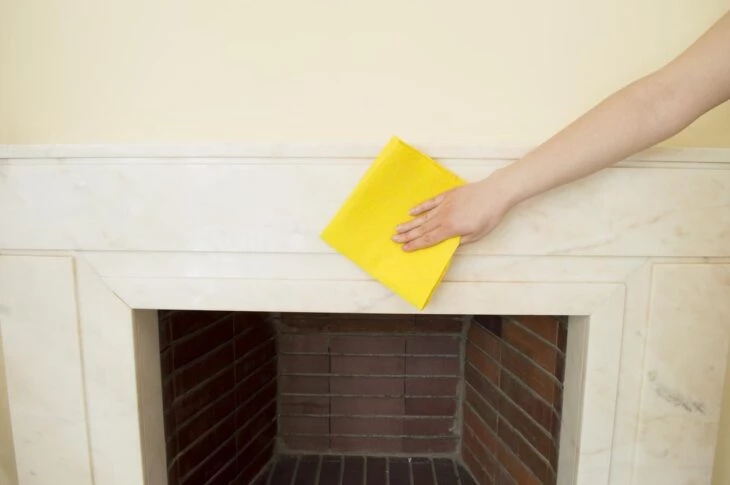
Travertine marble is a piece that needs care and attention when it comes to cleaning. The surface should be vacuumed at least once a week to prevent dust particles from settling in the veins of the stone. If the surface in question is the floor, use a portable vacuum cleaner, without wheels that can scratch the floor, or use a soft broom to sweep.
You can use a soft damp cloth to clean the stone. Use a solution of water and coconut soap or a pH neutral detergent, and remember to dry it with another cloth, this time dry but still soft. Do not let the water dry on its own, as this can result in staining. Avoid cleaning marble with corrosive and abrasive products, which can reduce its durability, create stains, scratches anderode the rock.
Travertine marble is the ideal covering for modern and elegant environments, but it is necessary to analyze the space where the stone will be applied, taking into consideration the decorative elements and the uses of the space, in order to choose the best model and finish for your room.


